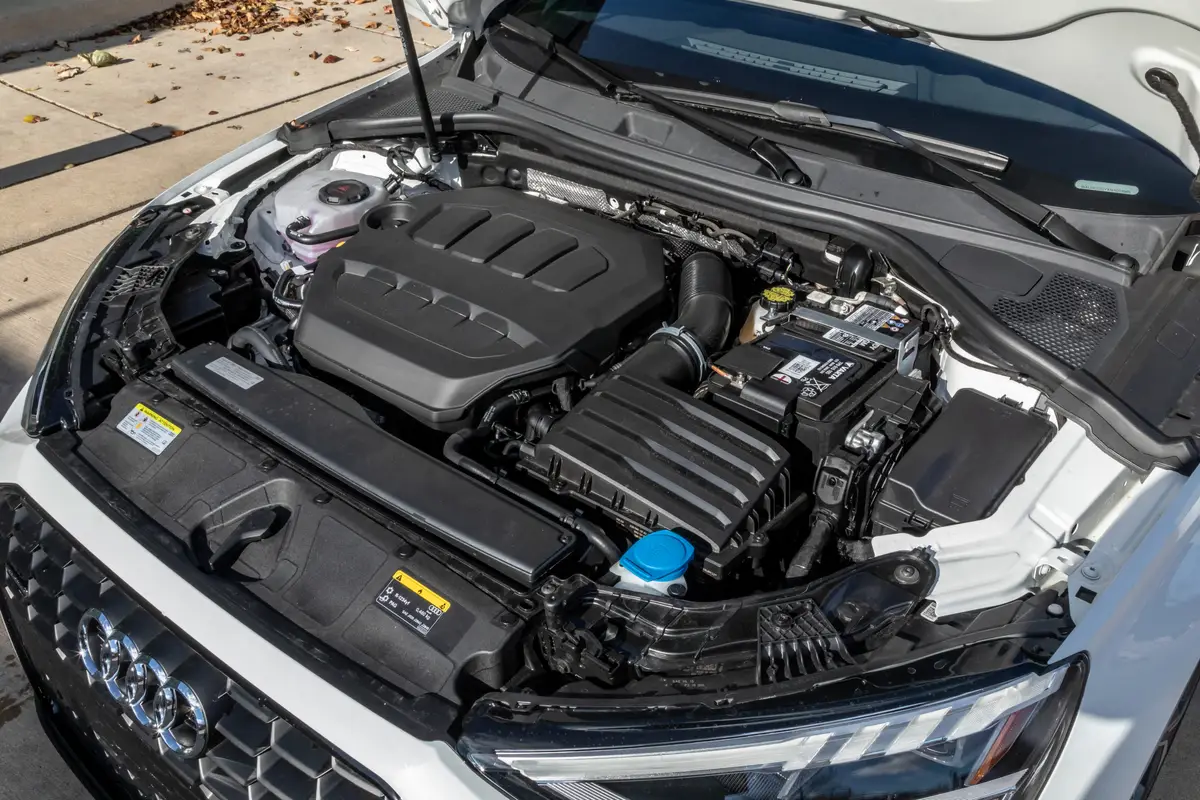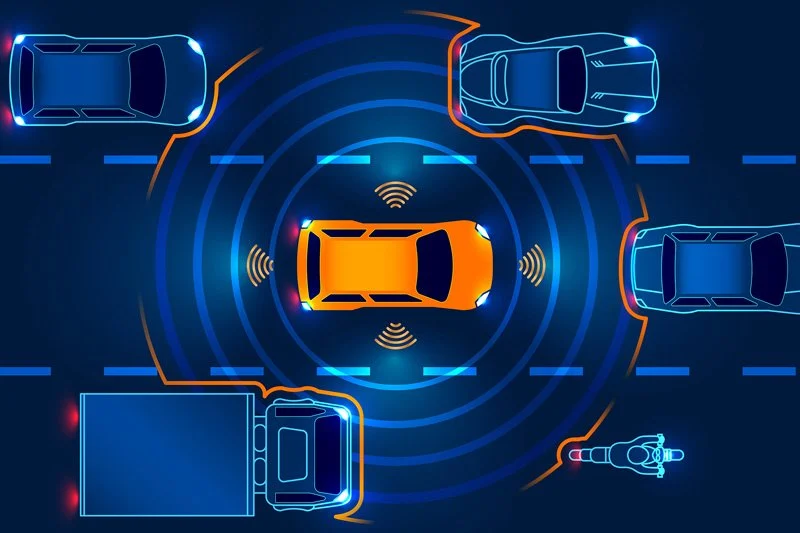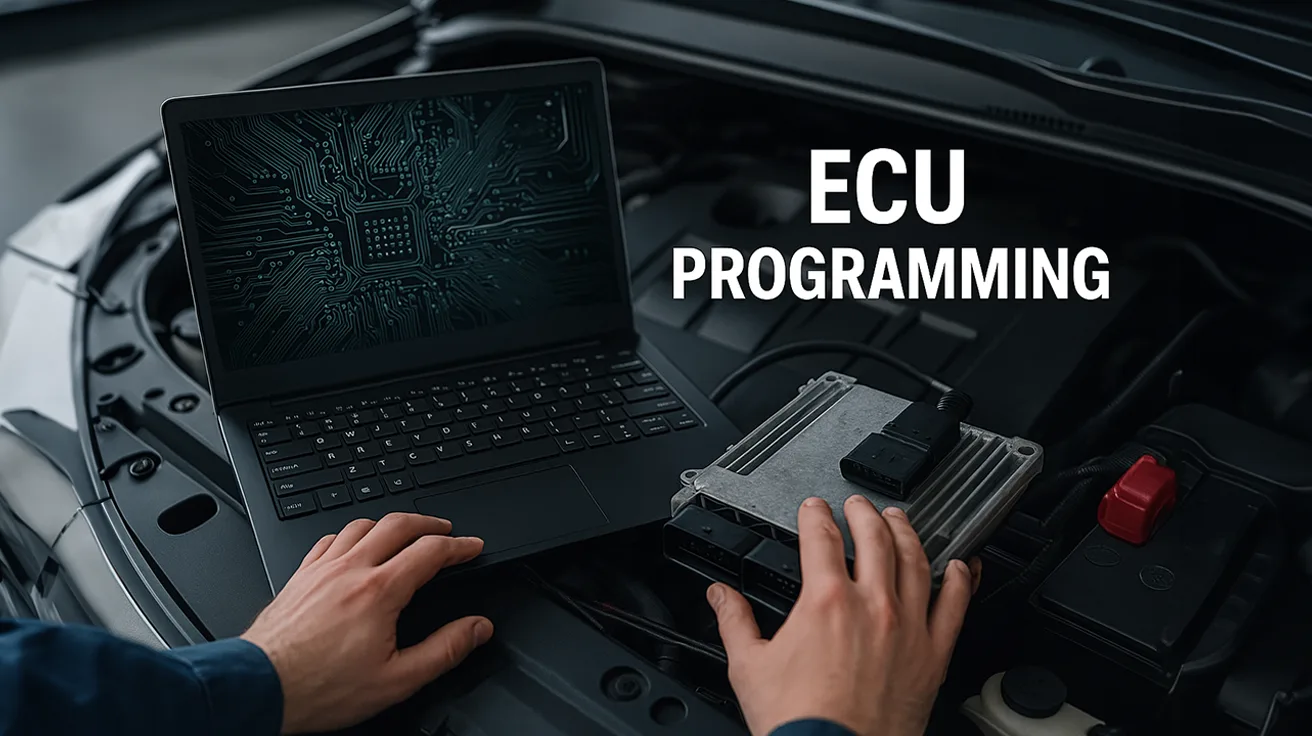Imagine your car had a brain. Not the mushy kind, but one that speaks binary and reads sensors better than any human can. That brain?
It’s called the ECU — and it plays the lead role in how speed is controlled today. With tighter traffic laws, safety-first school transport, and the booming logistics industry, speed limiting isn’t just useful — it’s essential.
Over the years, I’ve seen speed limiters go from clunky mechanical gadgets to intelligent digital systems. Now, the ECU does the heavy lifting. It reads, reacts, and regulates — all while you’re focusing on the road. Let’s dig into what makes the ECU tick in modern speed limiting.
✅Key Takeaway:
The ECU is the core component of modern speed-limiting systems. It monitors vehicle speed, engine performance, and GPS data to automatically enforce speed limits. By doing so, it enhances road safety, supports regulatory compliance, and provides smarter control for fleet and commercial vehicles.
What is an ECU (Electronic Control Unit)?

Think of the ECU as the vehicle’s command center. It doesn’t wear a badge or flashlights, but it’s pulling strings from behind the dashboard. You’ll find multiple ECUs in one car — engine, transmission, braking, airbag — and yes, speed control too.
The ECU reads sensor data constantly—throttle input, wheel speed, GPS position, and more. It crunches that information fast and turns it into action. For speed limiters, that means tweaking fuel flow, softening acceleration, and stepping in when the driver gets a little too heavy on the gas.
Core Functions of the ECU in Speed Limiting

Here’s where the rubber meets the road. The ECU limits speed by carefully regulating how much power reaches the wheels. It listens to speed sensors, checks if the current speed crosses a preset limit, and then sends orders to tone it down — all in milliseconds.
Throttle-by-wire systems give ECUs even more power. Instead of a cable pulling the throttle open, it’s all electronic. The ECU decides if the throttle opens fully or just enough to stay within safe limits. It’s smart, fast, and doesn’t flinch.
ECU-Based vs. Mechanical Speed Limiters
Mechanical limiters were like putting a rock under the pedal. Crude, but it did the job — kind of. They physically blocked acceleration beyond a certain point. But here’s the catch: they didn’t account for slope, payload, or road type.
ECU-based systems are miles ahead. They work with digital maps, know whether the vehicle is going uphill, and adjust limits dynamically. Plus, updates can be made without opening the hood — sometimes remotely. Imagine fixing a speed cap with a software patch. That’s how far we’ve come.
GPS Integration with ECU for Speed Limiting
Modern speed limiting isn’t just about setting a number — it’s about knowing where that number should change. That’s where GPS steps in and teams up with the ECU to create a smarter, location-aware system.
How GPS Talks to the ECU
The GPS module locks onto satellite signals to track location in real time. That data feeds straight into the ECU, which plays quiet enforcer behind the scenes. No sirens—just geofences and speed limits, triggered by where the vehicle is.
What Are Geofenced Speed Zones?
Geofencing is like drawing invisible boundaries on a digital map. School zones, construction areas, city centers — each of these zones can have a different speed limit programmed into the system.
When your vehicle crosses into one of these zones, the ECU responds instantly. It adjusts the throttle response or engine output so you can’t go beyond the allowed limit. The best part? You don’t need to lift a finger. It’s automatic.
Real-Life Example: School Buses
Let’s say a school bus enters a 40 km/h zone during pickup hours. The ECU detects the location and reduces the speed limit right away. Once the bus leaves the zone, the limiter switches back to the highway cap, like 80 km/h. It’s smooth and seamless — and more importantly, it keeps kids safe.
Used in Advanced Limiters Like Dual-Speed Systems
Take the Dual Speed Limiter from Resolute Dynamics. It’s built for this kind of smart control. It lets the ECU apply different speed limits based on where you are or what the terrain is like — rural road? Go 70. Inside city limits? Drop to 50.
Customizing Zones and Limits
Fleet operators can update these zones or limits using USB uploads, Bluetooth tools, or even over-the-air updates. No need to take the vehicle into the garage. The ECU just needs the new map file, and the rest is plug-and-play.
Why It Matters
This isn’t just cool tech — it’s a regulatory lifesaver. In many regions like the GCC, speed limiters with GPS-based geofencing are required by law for certain vehicles like school transport and logistics fleets.
It also builds a safety net for the driver. No more “Oops, I missed the sign.” The ECU makes sure your vehicle behaves, even if you’re distracted.
Multi-Speed and Dual-Speed Limiting Using ECU Logic
Now, one size rarely fits all. A van hauling cargo uphill needs more juice than a city cab on flat roads. Dual-speed limiters let the ECU switch between two or more preset speeds. Think of it like cruise control — but with smarter boundaries.
The ECU selects the right limit depending on road type, gear position, or time of day. And with fleet management software, operators can even assign different speed profiles for different drivers or routes.
ECU and RPM Regulation
Speed isn’t just about how fast the wheels spin — engine RPM plays a part too. A good ECU listens to the engine revs, not just the speedo. If the RPM climbs too high, it gently pulls back fuel injection or tweaks ignition timing to stay within range.
Resolute’s RPM Regulator shows how useful this can be. If a driver tries to downshift and gun it, the ECU can say “Not today,” and keep the engine humming safely instead of screaming. That’s not just safer — it saves the engine from wear.
Customization and ECU Programming

Not every vehicle drives under the same sky, and definitely not under the same rules. That’s why customization is the lifeline of modern ECU-based speed limiting systems — especially in global or regionally regulated fleets.
Why Custom ECU Settings Matter
Let’s say a delivery truck operates in Qatar. It might need a 100 km/h cap for highways. Meanwhile, a similar truck in Germany might face noise regulations or stricter emission laws that limit speeds to 80 km/h. Same vehicle, totally different rules.
With a programmable ECU, you don’t need to swap out hardware. Just reprogram it.
What Can Be Customized?
A lot. Here’s what most technicians and fleet managers tweak:
- Speed thresholds: Set different speed caps for city, rural, or highway zones.
- Geofencing rules: Link speed limits to specific locations using GPS zones.
- Dual-speed modes: Let the vehicle switch between speeds based on route or cargo.
- RPM limiters: Control engine output by capping how hard it can rev.
- Acceleration curves: Smooth out how quickly the vehicle gains speed.
How It’s Done
Tuning a speed limiter isn’t guesswork. It’s done through diagnostic tools, handheld devices, or dedicated software. Some ECUs take updates via USB; others support over-the-air changes—no cables, no garage visit, just remote adjustments when needed.
Techs plug into the vehicle’s OBD-II port or tap directly into the ECU harness. They load the speed parameters, hit upload, and the limiter’s updated. It’s like a software patch—but instead of squashing bugs, it sets hard limits.
When Regulations Change, Your ECU Can Keep Up
Speed regulations aren’t carved in stone. Laws evolve, especially in regions with growing urban safety concerns. Instead of replacing the limiter system, fleet managers can simply reflash the ECU firmware. A new rule comes in — update the file, upload it, and the vehicle is compliant again.
This flexibility saves time, money, and paperwork — especially for companies managing hundreds of vehicles across multiple jurisdictions.
Tamper Prevention and Safety Locks
Advanced ECU systems also include tamper detection. If someone tries to modify the settings without proper authorization, the system can lock out changes or send alerts to the fleet management system.
That’s peace of mind for fleet owners — and it keeps your vehicles on the right side of the law.
Safety & Compliance Benefits of ECU-Controlled Speed Limiters
Here’s the thing — this isn’t just about fancy tech. ECU-controlled speed limiters save lives. They prevent high-speed accidents, reduce fuel waste, and help companies stay within government-mandated safety laws.
Some regions now require limiters for all commercial or school vehicles. An ECU-based system not only meets those laws but makes audits easier. Stored speed data, digital certificates, and tamper-proof logs mean the paperwork handles itself — mostly.
Conclusion
The ECU isn’t just a box with wires. It’s the brains behind modern driving safety — especially in speed control. Whether it’s keeping a bus safe in a school zone or making sure a delivery van doesn’t fly down a hill, the ECU has its digital hands on the wheel.
Speed limiting systems have come a long way, and the ECU is leading the charge. If you’re in the automotive space, ignoring it now would be like trying to sell a flip phone in the smartphone era.
FAQs
Q: How does the ECU know when to limit speed?
It reads the vehicle speed from sensors. If the value exceeds a preset threshold, it intervenes via throttle or fuel control.
Q: Can a driver override an ECU-based limiter?
In most systems — no. These are built to prevent tampering. Some have admin access, but that’s locked to fleet managers or regulators.
Q: What’s the difference between speed limiting and cruise control?
Cruise control maintains speed. A limiter stops you from exceeding it. One’s passive; the other’s preventative.
Q: Can ECU settings be updated remotely?
Yes, many systems allow OTA (Over-The-Air) updates, especially in fleet vehicles.
Q: Are speed limiters legally required?
In many countries, yes — especially for school transport, taxis, and commercial fleets.
